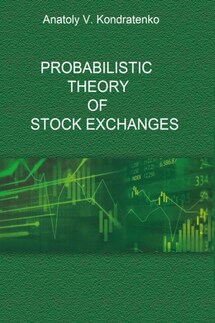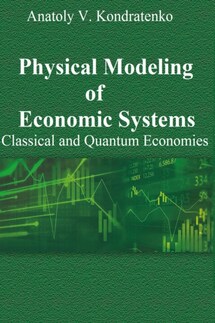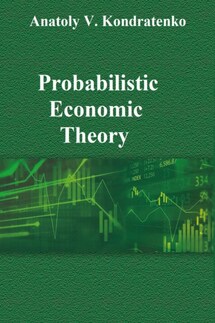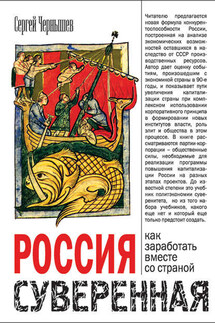This is the third monograph in a series devoted to the development of probabilistic economic theory [Kondratenko, 2005, 2015, 2021]. When the first book was being prepared for publication, the publisher asked the author how soon, in the author’s opinion, this new theory would gain widespread acceptance among economists. His answer was: at the very least 20 years, for the simple reason that it is a priori not enough to put forward another alternative economic theory – first, it is necessary to show its benefits as compared to the others, second – to prove that it is correct, and third – to showcase how it can be used in practice to describe experimental data and develop predictions of economic dynamics. This monograph addresses all three of these issues: it shows how this theory is better than others; it proves, by the example of important organized markets such as stock exchanges, that it is correct; and, based on the analytical and numerical results obtained, it offers a method for describing and forecasting economic dynamics.
It is explained below why stock markets were chosen as the main object of study. It is well known that specialized activities of goods exchange or trade between different producers and different countries plays an eminent role in the growth of the welfare of individuals and states as a whole in the early stages of its development, and then in the subsequent rapid formation and development of capitalism in the world. In this process, the most important place was first occupied by ordinary markets, which facilitated and thus accelerated the process of exchange of some goods or values for others, and then by organized markets, the highest form of which are, in particular, stock exchanges: commodity, financial, currency and others, which form and represent in their entirety the stock exchange economy. This exchange economy is now effectively using all the most advanced methods and tools of electronic trading, including artificial intelligence and algorithmic trading using computers; while the extensive use of the Internet makes the exchange economy very fast, virtual and truly global. It is the high speed of information exchange and transactions that distinguishes the new virtual exchange economy from the traditional real economy. But this specific feature of exchange trading can carry additional risks for both the exchange and the real economy, the tasks of which are still rather superficially understood in the economic academic community. In today's global economic world, the role of stock exchanges has become so significant that it would not be an exaggeration to say that the entire global economy is gradually becoming exchange-based. For sure, it would be more accurate to talk about the transformation of the global economy into a financial economy, but this monograph will be focused on studying only the role of exchanges in the economy, so the term “exchange economy” will be used. The main purpose of exchanges in today's economy is to determine the prices of all traded assets, including various money (currencies), to facilitate their trade and provide financing for the global economic activity. But it is also important that the situation in exchanges is the most universal indicator of the situation in the entire global economy. The paradox of this situation in this global financial world is that there is clearly no correlating situation in the world of theoretical finance. An adequate theory of organized financial markets still does not exist, which means that an adequate theory of the global market real economy is also out of question. This situation gives rise to certain risks of the emergence and uncontrolled development of negative trends in financial markets, which can lead to large-scale financial and then economic crises. And that’s what we regularly observe in real life: the generator of almost all economic crises in modern history are financial crises triggered by a stock market crash.
Currently, the situation is aggravating and the risks are increasing due to the fact that the bulk of transactions are now carried out by computers, working strictly according to algorithms, aimed mainly at achieving quick results without even minimal losses, and acting almost simultaneously, which can cause a chain collapse at stock exchanges uncoupled from the actual situation in the economy and the real value of assets. Meanwhile, the regulators do not have any meaningful and reliable tools for controlling and managing particularly explosive situations in financial markets, especially in organized markets or stock exchanges, where the prices of all global commodities and assets are largely determined. Such regulating agencies currently use accumulated historical experience and empirical parametric models to develop their management processes [Intriligator, 2002]. For these reasons, overcoming the apparent stagnation in the development of theoretical finance is a long overdue global task. The main challenge here and now is the almost complete absence of a mathematical apparatus with a potential to be used not only describe the exchange functioning as an asset pricing mechanism, which is done by financial econometrics at a qualitative level, but also accurately calculate the temporal fine price structure and the temporal fine structure of the trade volume during short time intervals, for example, during one trading session. Using the analogy with the scattering theory in physics, this can be formulated the other way around. Econometrics solves the so-called inverse problem, namely, extracting information about the studied system from the experimental data. The present study, however, aims at solving a direct problem – creating a fairly universal method for ab initio calculation of the exchange time microstructures with a characteristic size of a few seconds, which can be directly compared with the corresponding experimental fine structures of time trading dynamics, a method that could serve as a powerful tool for building a general theory of exchanges. We hope that the probabilistic theory of stock exchanges developed in this study can serve as a basis for building a general probabilistic financial theory and a deeper understanding of how the global world of finance works.








